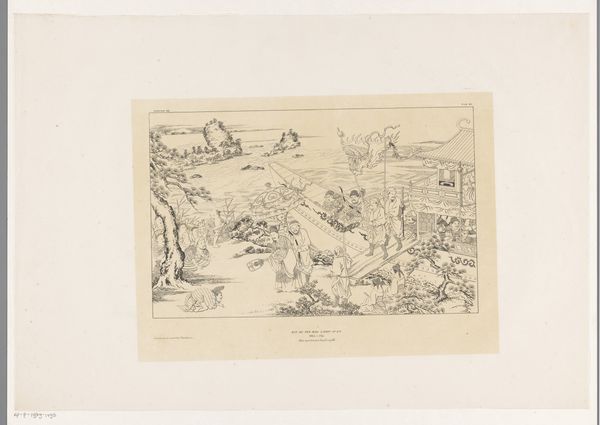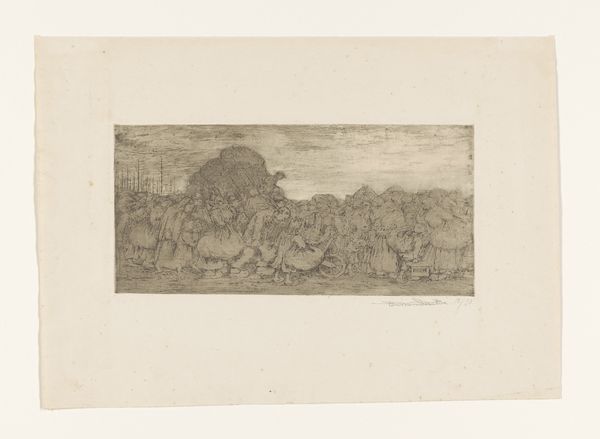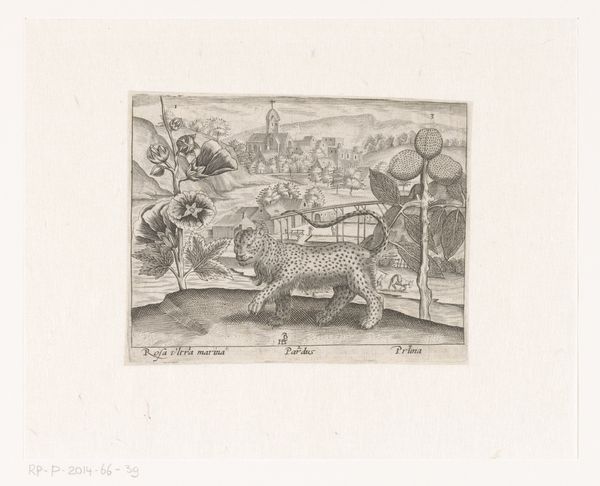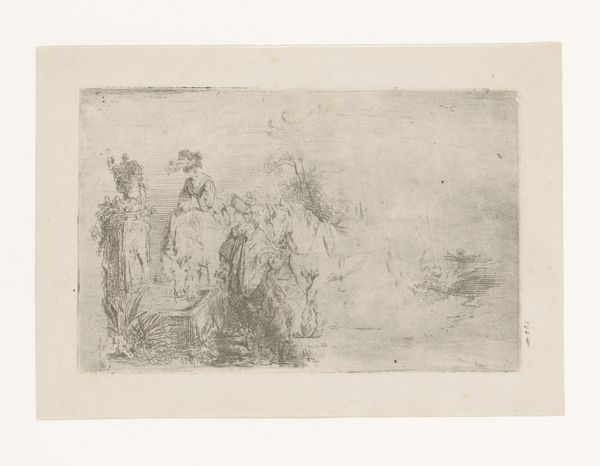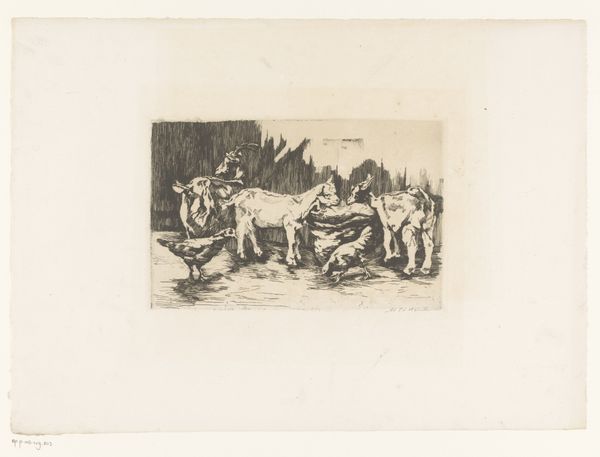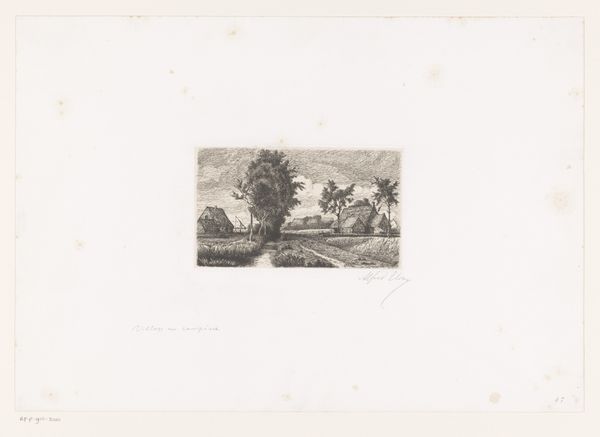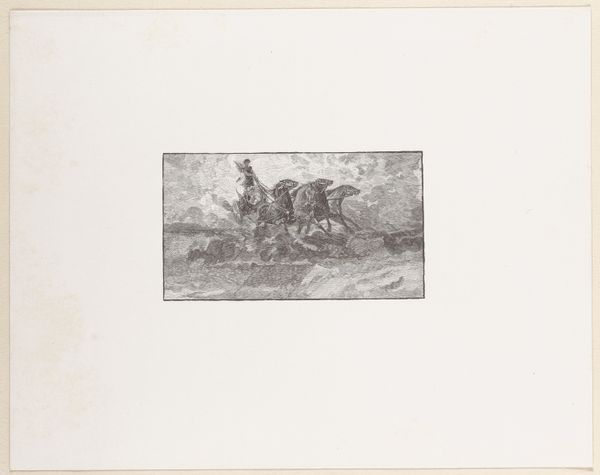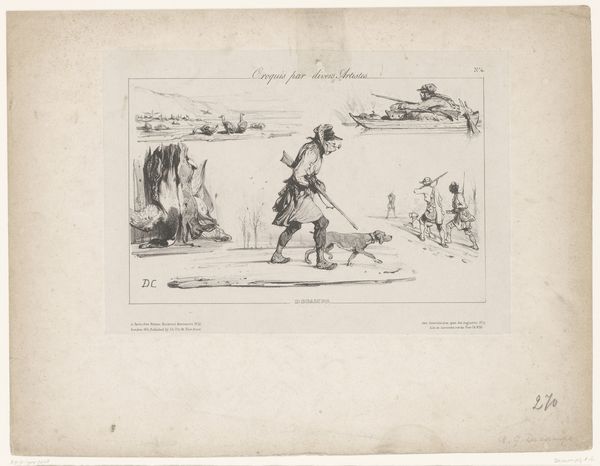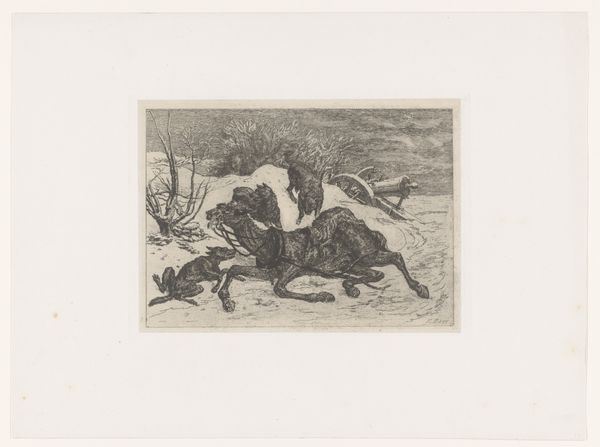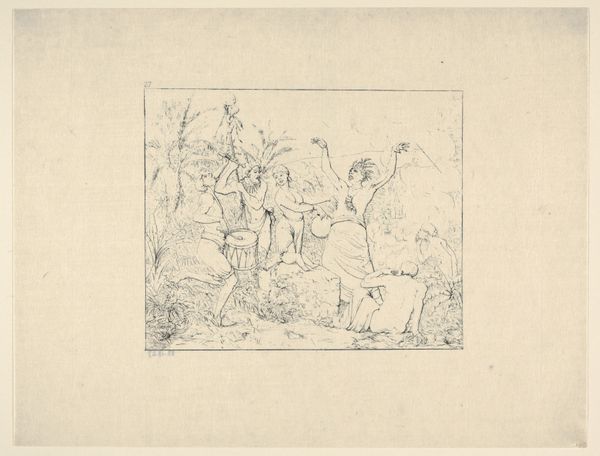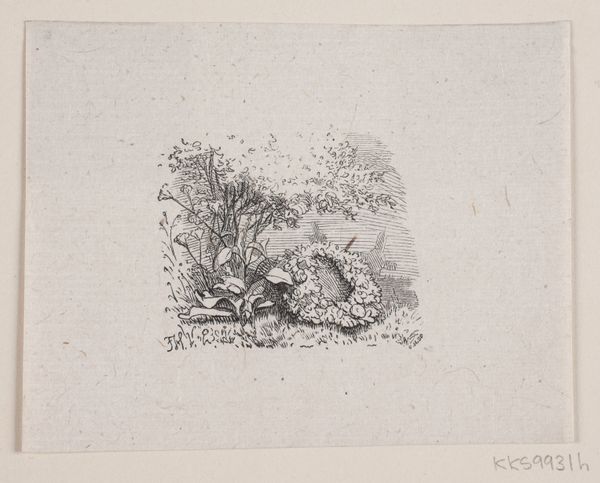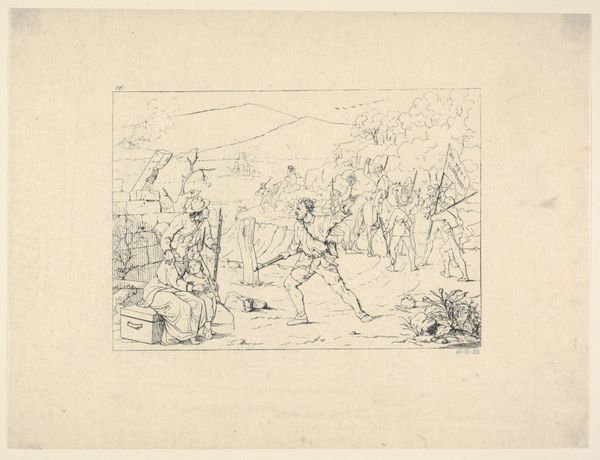
drawing, print, etching, paper
#
drawing
#
allegory
#
baroque
# print
#
etching
#
landscape
#
figuration
#
paper
#
line
#
history-painting
#
nude
Dimensions: height 104 mm, width 146 mm
Copyright: Rijks Museum: Open Domain
Editor: So, here we have "Triumph of Venus," an etching and print on paper by Pierre Brebiette, dating back to between 1617 and 1626. I'm immediately struck by the density of figures and the overall allegorical feel of the work. What can you tell me about this piece, looking at its cultural and historical contexts? Curator: This etching gives us insight into the patronage and circulation of classical themes within the Baroque period. Prints like these were instrumental in disseminating artistic ideas. Consider the choice of Venus. How does portraying the goddess of love in triumph reinforce social ideas or power structures of the time, especially within a city like Rome, indicated in the print? Editor: That’s a really interesting angle. I was just seeing it as a mythological scene, but thinking about how the image reinforces power makes me look at it differently. Curator: Precisely! It’s not merely about artistic skill. Ask yourself who commissioned such imagery, and what political or social messages might they have wanted to convey through its widespread distribution? These kinds of works celebrated and legitimized patrons' authority by associating them with classical ideals of beauty, pleasure, and ultimately, control. Editor: So, the imagery is really tied into demonstrating a kind of refined power, right? The triumph of Venus then symbolizes more than just beauty. Curator: Exactly. Think about the public role of art during the Baroque era and who was permitted to produce, display, and consume such images. Etchings like these reached wider audiences, solidifying certain interpretations of power and femininity. Does thinking about that context change your perspective on the piece at all? Editor: Absolutely. I initially just focused on the visual spectacle of the etching, but now I am much more interested in how this scene operates within the larger socio-political arena. Curator: It's a vital step in appreciating historical artwork. Shifting your perspective reveals the intricate dialogue between art and its historical circumstances. Editor: Thanks for providing that framework; it is going to reshape how I view other art, especially from this era.
Comments
No comments
Be the first to comment and join the conversation on the ultimate creative platform.
